Microplastics in Synthetic Turf Pitches - Is the current approach the best?
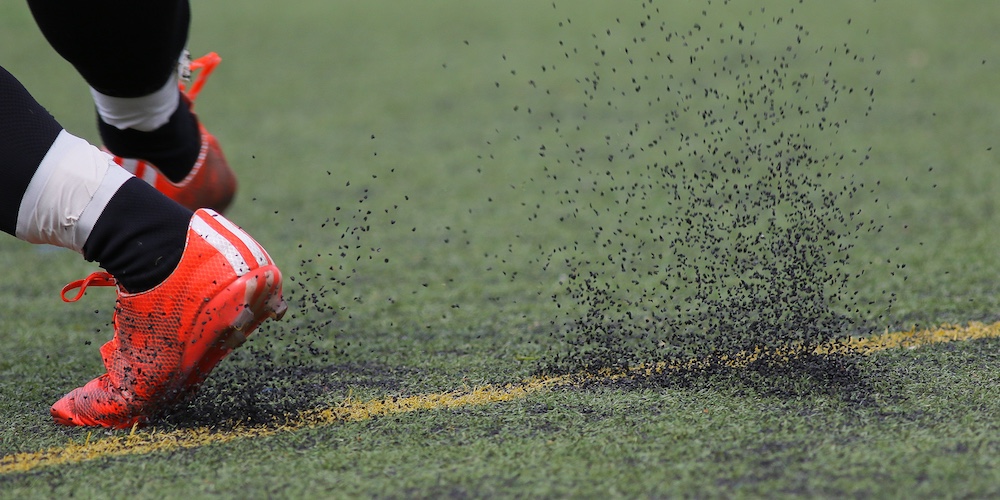
2023-02 Microplastic particles are increasingly detected in natural habitats and the food chain raising concerns regarding their impact on the environment and potentially human health. From the packaging of food to children’s toys, heat-saving or cold-protecting domestic insulation and other construction materials to life-saving medical innovations and protective materials, plastic materials are omnipresent in our lives. Accordingly, discovery of plastic waste in remote areas on the planet, chocking recycling systems in the developed world to concerns about penetration into the food chain have led to regulatory reviews around the globe, in particular the European Union. However, the proposed regulatory definition of microplastics currently under review appears to highlight difficulties in setting an appropriate size criteria.
The Size of the Price
Global production of plastic materials has increased exponentially since 1950. Whilst population growth steadily increased from about 2.5 billion in 1950 to more than 7.8 billion in 2020 [1], annual manufacture of polymer resins and fibers has increased rapidly from 2 million tons to almost 500 million tons during the same period of time [2] (see Figure 1).
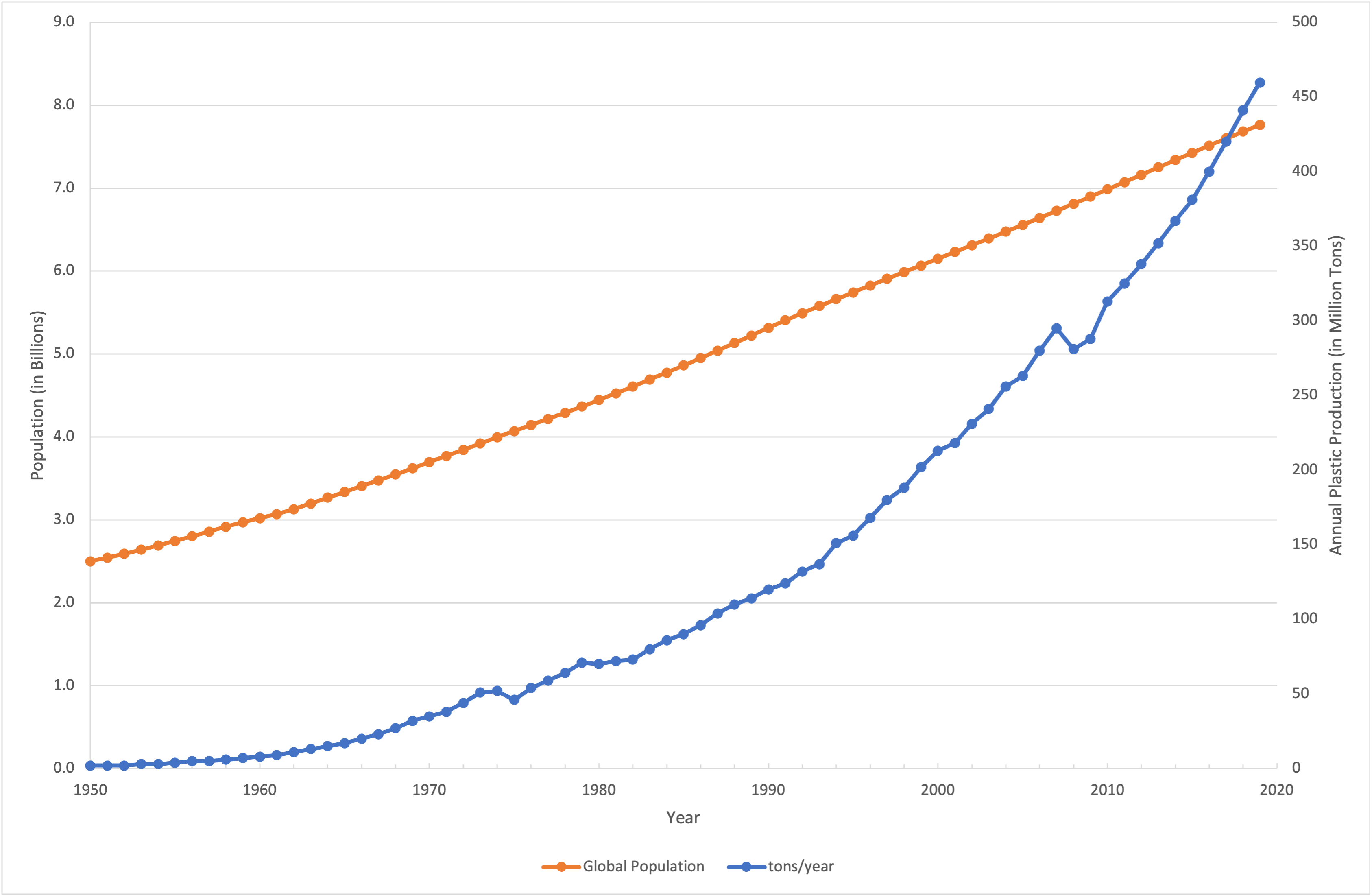
Figure 1. Global Population Growth and Annual Plastics Production Volumes. Source Data [1] [2]
Plastic production by type identifies 39.9% as packaging, 19.8% as building and construction, 9.9% automotive, 6.2% electrical and electronics, 3.4% agriculture and 4.1% household, leisure and sport. Particular during the pandemic, medical appliances, protective equipment and other consumables increased to 16.7% [3] (see Figure 2). According to the same information very recently published by the European Parliament in January 2023, nearly a third (32.5%) of plastic waste in Europe is recycled, 24.9% landfilled and 42.6% incinerated for energy recovery (see Figure 3).
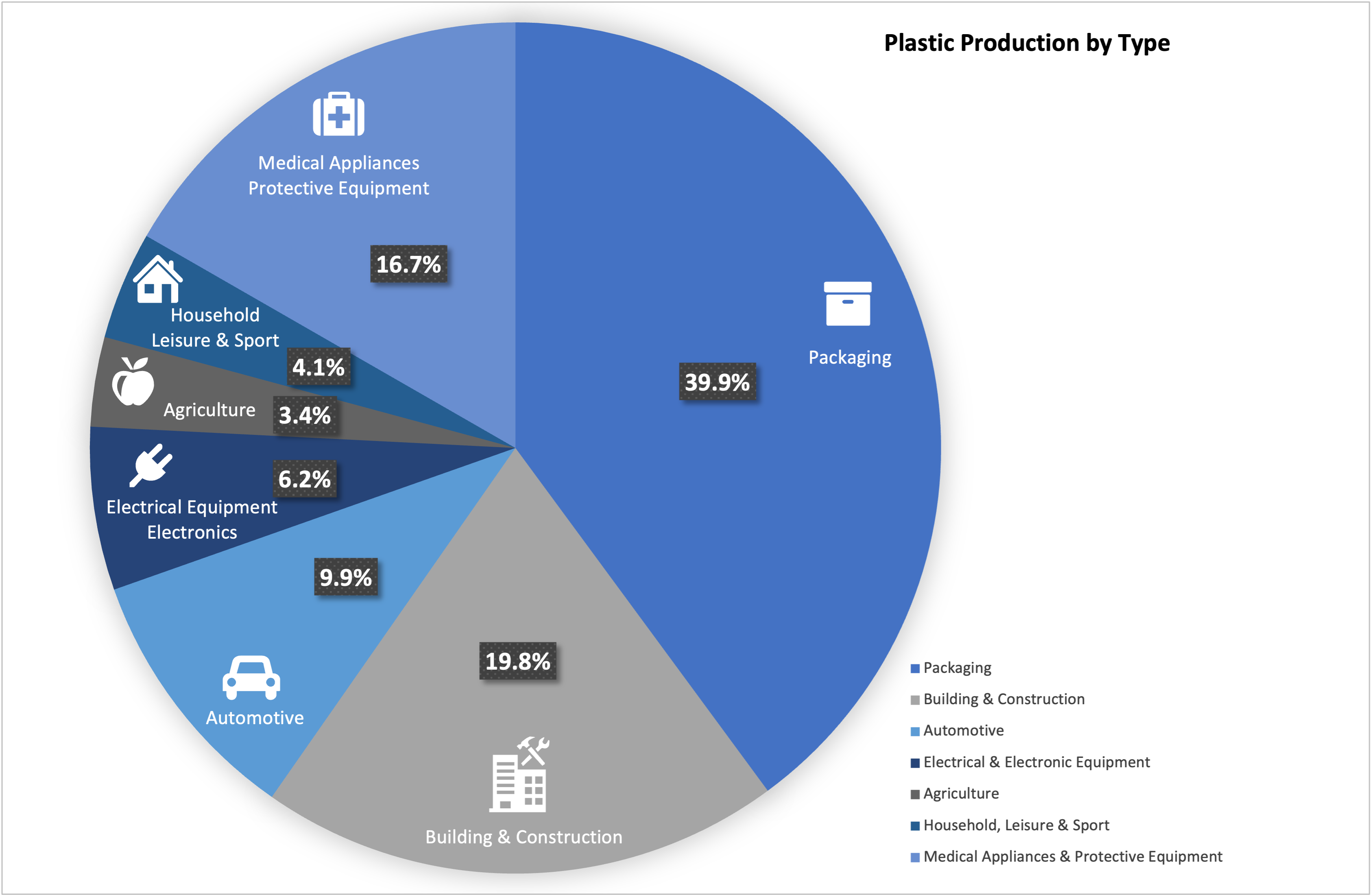
Figure 2. Plastic Production in the European Union. Source: [3]
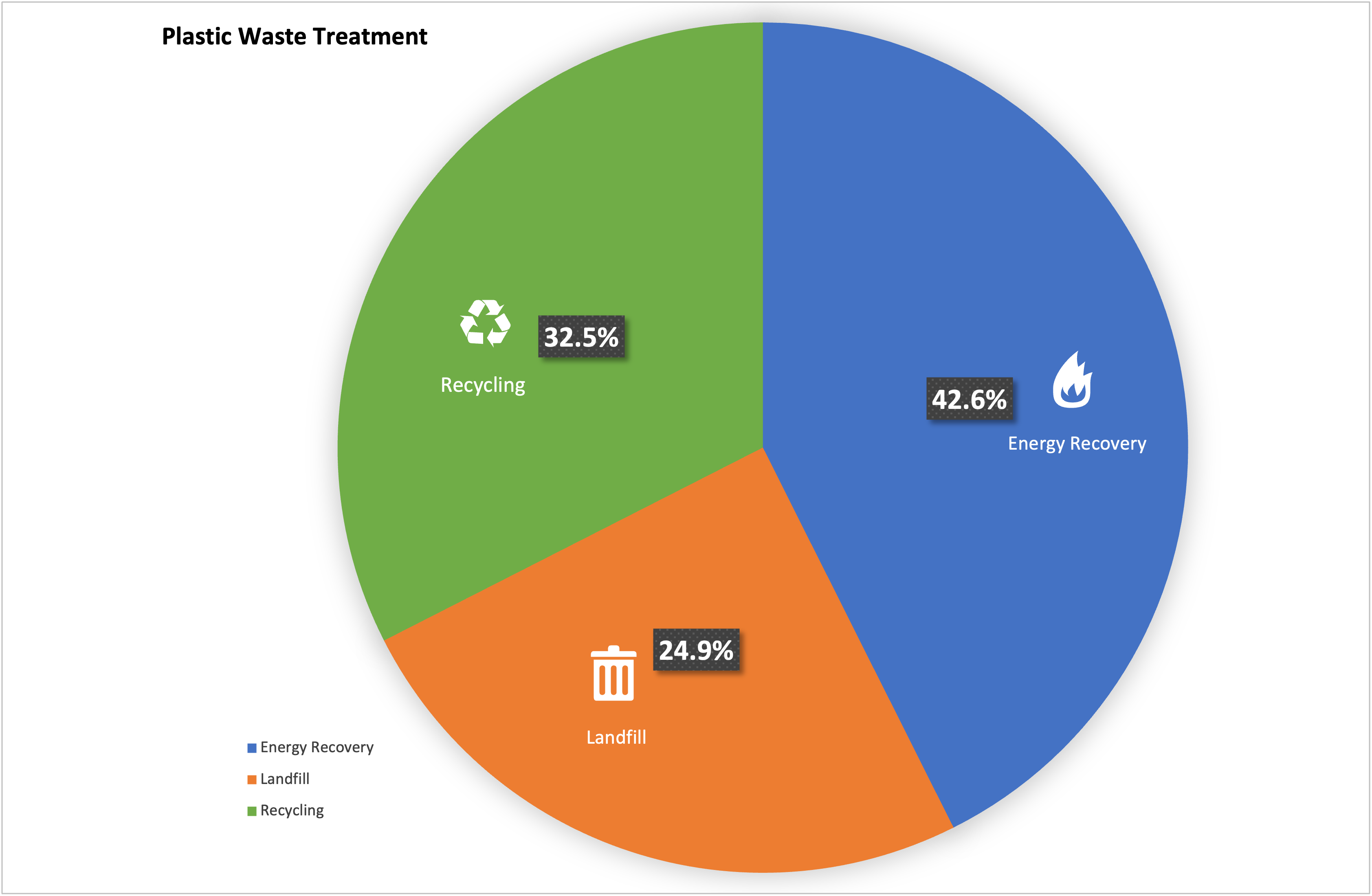
Figure 3. Plastic Waste Treatment in the European Union. Source: [3]
EU addresses Microplastics in Environment
In a first step, the European Commission requested the European Chemical Agency (ECHA) to assess the health and environmental risks posed by microplastics. ECHA defines microplastics as tiny fragments of plastic that resist (bio)degradation including rubber and plastics. ECHA distinguishes between microplastic particles
- intentionally added to products used in cosmetics, detergents and maintenance products, paints, inks and coatings, construction materials and medicinal products, as well as in other products used in agriculture & horticulture and in the oil & gas sectors
- resulting from fragmentation
As part of the EU Plastics Strategy, in early 2019 ECHA proposed the following stepwise approach to reduce the emissions of microplastics from all sources:
- intentionally added microplastics in products;
- microplastics that are generated unintentionally during the life-cycle of products;
- plastic waste entering the sea and ultimately becoming microplastics because of fragmentation, if the waste is not removed.
Whilst ECHA describes microplastics as fine, powdery particles or fragments, it specifies particles sizes below 5mm as microplastics.
Regulatory Definition of Microplastics
Questions in relation to regulatory definition of microplastics and in particular particle size ranges have been extensively discussed. According to Article 3(5) of Regulation (EC) No 1907/2006, the “term ‘microplastic’ means a material consisting of solid polymer- containing particles, to which additives or other substances may have been added, and where ≥ 1% w/w of particles have (i) all dimensions 1nm ≤ x ≤ 5mm, or (ii), for fibres, a length of 3nm ≤ x ≤ 15mm and length to diameter ratio of >3”.
The 2019 ECHA Restriction Dossier suggests that “the upper limit of 5mm appears to be universally accepted” [4]. However, the same dossier cites research work with recommendations for a definition and categorization framework for plastic debris. This research work from Denmark, Germany, Norway and UK acknowledges the difficulties in setting appropriate size criteria. As a matter of fact, the work of Hartmann et. al. [5] summarizes categorization of nanoplastics, microplastics, mesoplatics and macroplastics as part of its literature review. According to the categorization framework proposed, the size classification for microplastics points to a size range of 1-1,000𝛍m with an upper limit of 1mm rather than 5mm (see Figure 4).
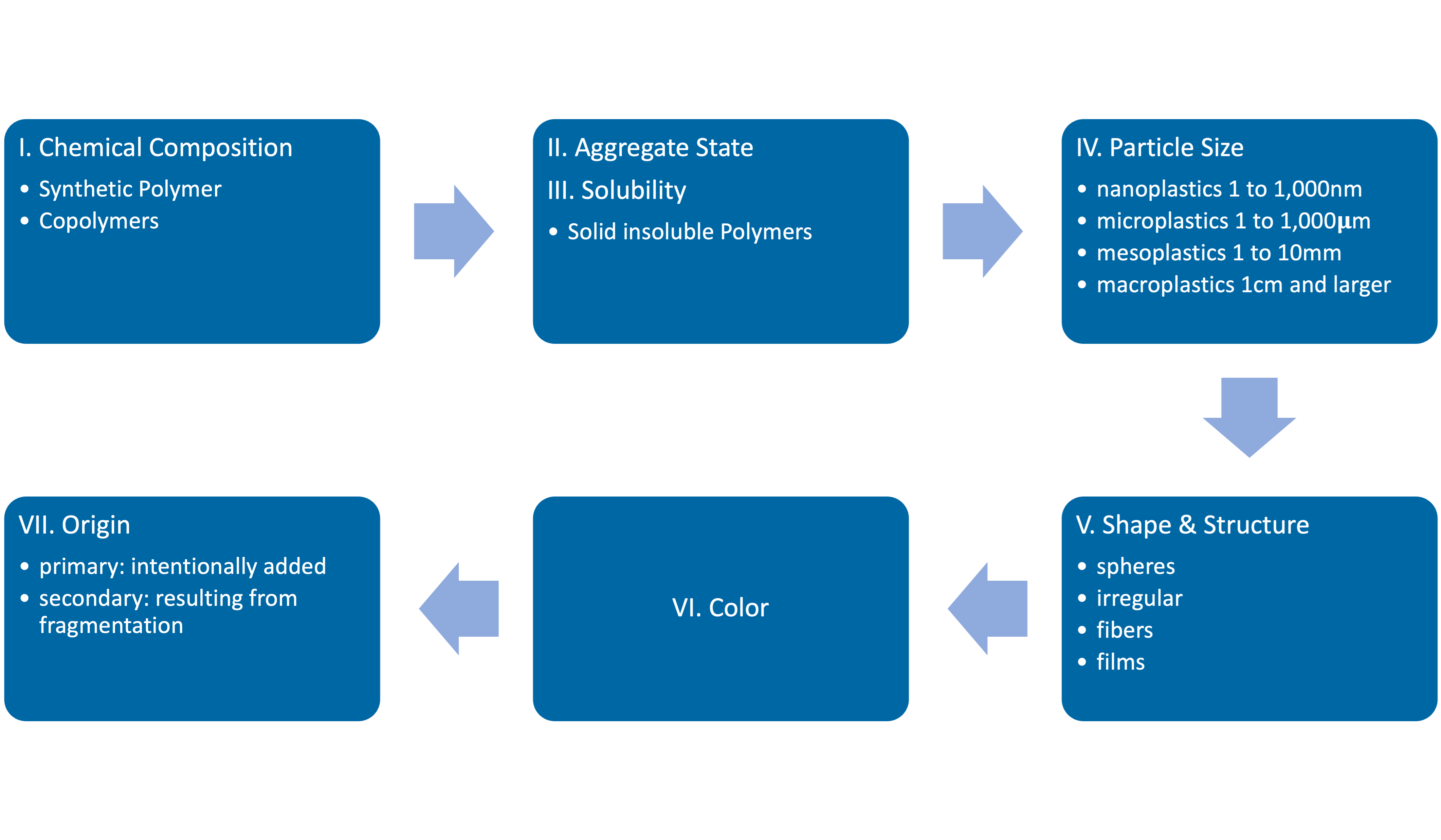
Figure 4 Categorization Framework to classify Plastic Particles. Adopted from [5]
When it comes to microplastic and synthetic turf, the proposed regulatory definitions impact polymeric and rubber infill as well as man-made fibers. A majority of third generation long-pile synthetic turf systems rely on SBR granules with a particle size range of 0.5 to 1.5mm or 0.8 to 2.0mm as performance infill as an economically viable and performance-satisfying solution (see Figure 5). However, the proposed regulation also encompasses alternate materials, e.g. EPDM, TPE or other polymer materials currently in use. Accordingly, under stage one of the proposed regulations, the intentional use of polymeric or rubber granules as performance infill would be banned going forward potentially leaving organic (natural) infill, bio-degradable or soluble polymers and non-carbon polymers as potential replacement material. In particular the use of organic materials might require further consideration regarding survival of bacteria on synthetic turf, e.g. staphylococcus which have been linked to cause pus formation especially in the skin and mucous membranes [6].
As the fiber length of the synthetic turf carpet construction typically exceeds the dimensions stipulated by the proposed regulation, initially fibers are not expected to the subjected to stage 1 regulations. However, as future stages are anticipated to also address microplastics that are generated unintentionally during the life-cycle of products, both performance infill as well as fibers are expected to be subjected to any future regulation.
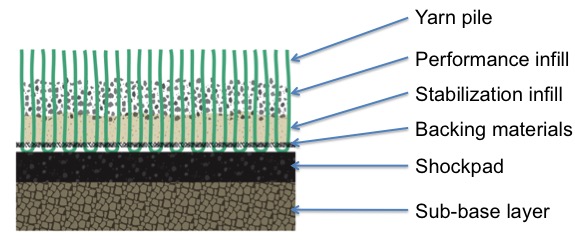
Figure. 5 Third-Generation Synthetic Turf System (not to scale). Source: chemneera (copyright)
Is the particle size of 5mm the best approach or should it be 0.5mm?
EN/DIN 18035-7:2014-10 defines the fines content in performance infill of synthetic sports surfaces as smaller than 0.5mm with a requirement of less than 1% (by weight) in accordance with EN 933-1.
Accordingly, stipulating a particle size of 0.5mm as a lower limit for the regulatory definition of microplastics would be consistent with the exposure possibly arising from fines and powdery particles as intended by EN/DIN 18035-7. In addition, a particle size of 0.5mm as a lower limit would also be consistent with performance questions and athlete displeasure as reported in the field occasionally. For example, performance infill with particle sizes larger than the above range have been identified as a root cause for skin abrasion and related issues. Similarly, finer particles smaller than the lower limit of 0.5mm have been linked to dust exposure of athletes during ground contact.
In summary, a lower limit of 0.5mm would address the requirement to regulate ‘intentionally added microplastics’ as per EU Plastics Strategy whilst at the same time satisfying the increased demand for playing fields suitable for intensive playing and recreation activities in a densely populated world.
Additional Information
If you are interested to discuss further, please contact chemneera.
Resources
[1] https://population.un.org/wpp/
[2] https://ourworldindata.org/grapher/global-plastics-production
[3] https://www.europarl.europa.eu/news/en/headlines/society/20181212STO21610/plastic-waste-and-recycling-in-the-eu-facts-and-figures
[4] European Chemicals Agency (ECHA). Annex XV Restriction Report – Intentionally added microplastcs. (2019).
[5] Hartmann et. al.Environ. Sci. Technol. 2019, 53, 1039-1047
[6] https://extension.psu.edu/survival-of-staphylococcus-aureus-on-synthetic-turf
Image Source Shutterstock



